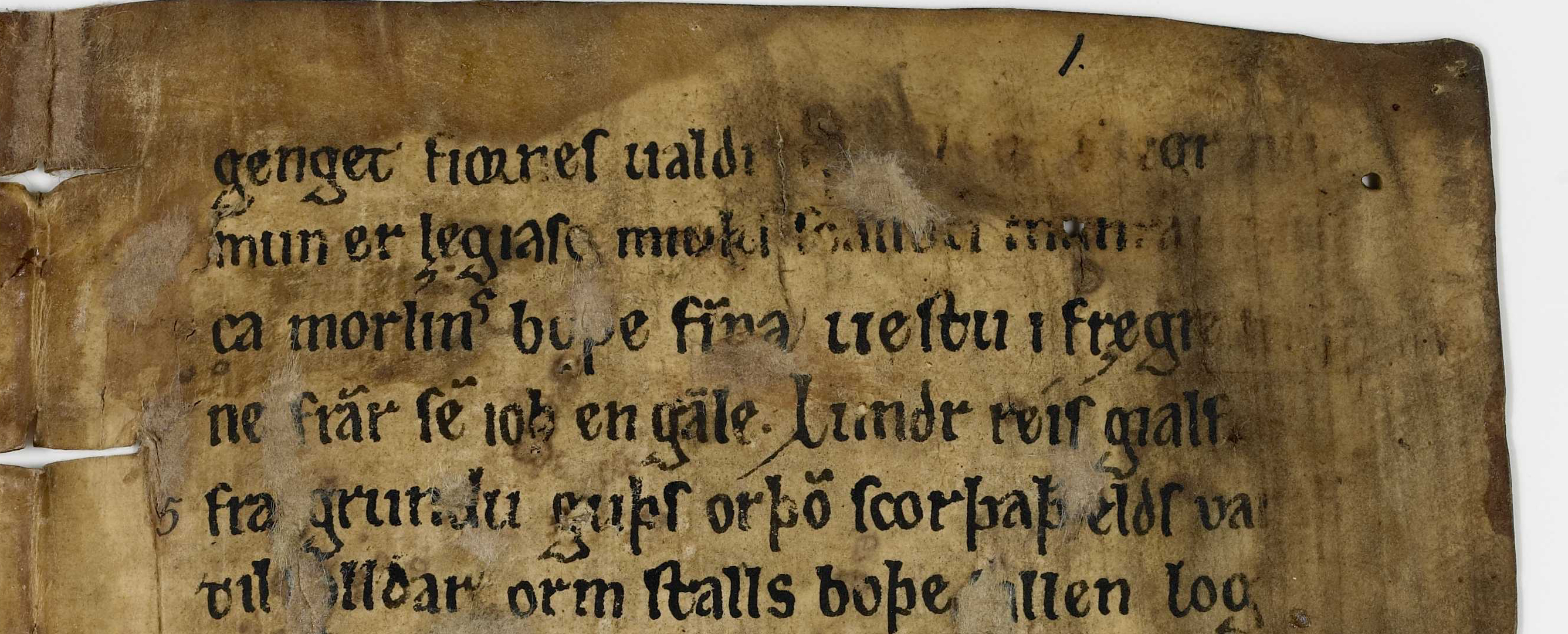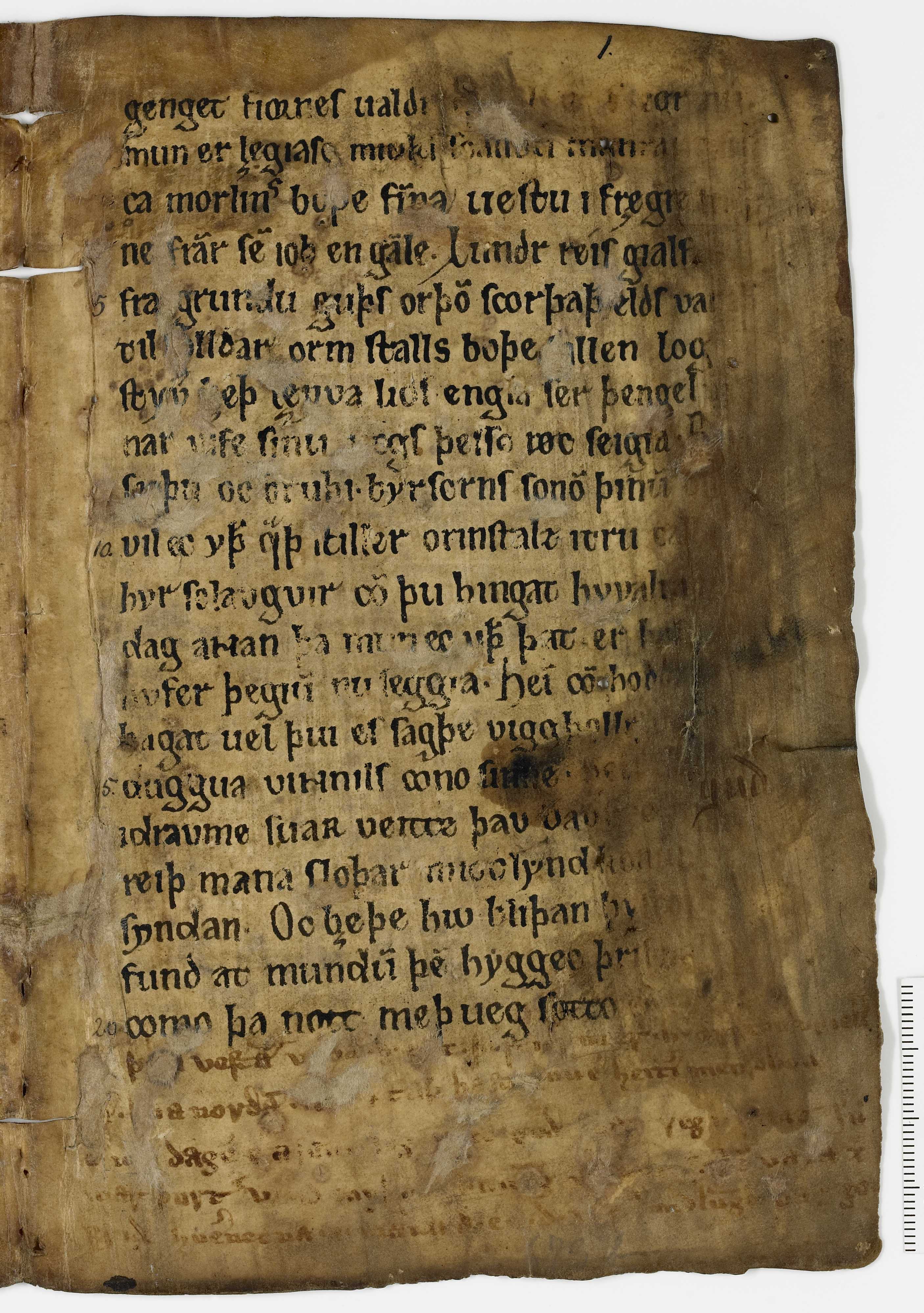AM 673 b 4to: The Oldest manuscript of medieval Scandinavia's most prolific poetic form
20 September is the feast of St. Eustace in the Western Christian calendar and this month’s manuscript commemorates the saint in poetic form, namely the so-called Plácitusdrápa (‘poem with refrains about Placidus (St. Eustace)’).

The legend of Eustace recounts how a general named Placidus, in the service of the Roman Emperor Trajan, sees a vision of the crucifix between the antlers of a stag (a motif which has found its way into many cultural artefacts including the label for Jägermeister). The stag tells him to return with his family the next day to be baptised, and he is christened Eustace. He then goes through a series of ordeals: he loses his possessions and flees with his family, and then his wife is taken by a ship’s captain. While attempting to carry his sons over a river, one is taken by a lion and the other by a wolf. After fifteen years working as a
The cult and legend of Eustace
The poem is in the drápa form, that is, a long poem with refrains. The diction of the poem preserves traditional pre-Christian motifs in its kennings such as
 This manuscript itself is from the end of the 12th century, a period when Icelandic manuscript writing in the vernacular was still in its infancy. According to
This manuscript itself is from the end of the 12th century, a period when Icelandic manuscript writing in the vernacular was still in its infancy. According to
Plácitusdrápa is composed in the dróttkvætt metre, which is the metre most extensively preserved from the Nordic countries prior to c. 1400. Although we have very strong linguistic evidence to show that dróttkvætt poetry was being composed from the ninth century onwards, its material preservation in writing is very rare before the thirteenth century. This makes AM 673 b 4to a very important item in our understanding of early dróttkvætt poetry. It is the oldest manuscript containing this metrical form and there are only two or three runic inscriptions containing dróttkvætt which may be older. These
The preservation of the manuscript indicates that at least one leaf has been lost from the beginning and end of the surviving material. This combined with the formal structure of the drápa form means that we can calculate that 11 stanzas are missing from the beginning and 8 from the end of the poem (originally 78 stanzas). Of the leaves that do survive, there is extensive damage including worn text and numerous small holes.

Sveinbjörn Egilsson published an edition in 1833 of the poem for the school in Bessastaðir, based on transcriptions by Þorsteinn Helgason (included as part of the edition) and Halldór Einarsson (included as variants). Finnur Jónsson edited it again in 1887 with a diplomatic transcription. Finnur was apparently able to read a large number of
The 2007 edition, translation and commentary on the poem is available with open access at http://skaldic.abdn.ac.uk/m.php?p=text&i=1039
Contact
 Tarrin John Wills is an editor at the Dictionary of Old Norse Prose
Tarrin John Wills is an editor at the Dictionary of Old Norse ProseBibliography:
Finnur Jónsson (ed.), ‘Plácítúsdrápa efter håndskriftet no 673 B 4, i den Arna-Magn. Saml.’. Opuscula Philologica, 210-64. Mindre Afhandlinger udgivne af det philologisk-historiske Samfund. Klein, Copenhagen, 1887.
Jón Helgason, ‘Til skjaldedigtningen’. Acta Philologica Scandinavica 7 (1932-3), 150-68.
Jonna Louis-Jensen and Tarrin Wills (eds), ‘Plácitusdrápa’, in Margaret Clunies Ross (ed.), Skaldic Poetry of the Scandinavian Middle Ages. Vol. VII: Poetry on Christian Subjects. Brepols, Turnhout, 2007, pp. 179-220.
Sveinbjörn Egilsson (ed.), Brot af Placidus-drápu. Helgi Helgason, Bessastaðir, 1833.
John Tucker (ed.), Plácidus saga. Editiones Arnamagnæanæ B 31. Reitzel, Copenhagen, 1998.
